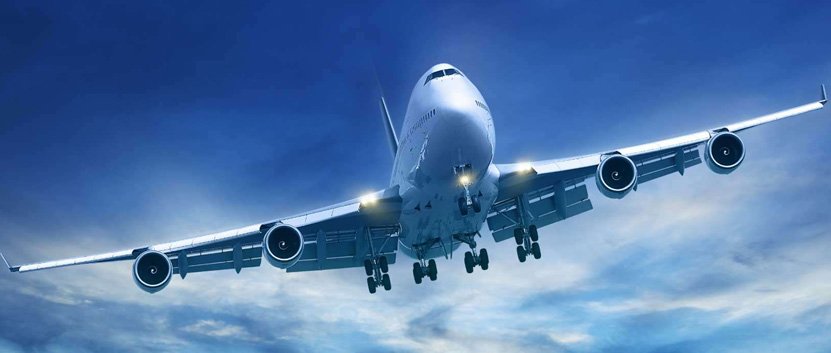الاضطرابات التي تُصيب قطاع الطيران في دول مجلس التعاون الخليجي – إلى أين؟

| YoY change (2015 vs 2016) |
Revenue | Net Income |
| Emirates | 0% | -82% |
| Etihad | -22% | NM |
| Qatar Airways | 4% | 30% |
| Oman Air | 1% | NM |
| Jazeera | -10% | -35% |
| Air Arabia | -1% | -4% |
Source: Annual reports
NM indicates losses during the period considered
Full Service carriers facing more trouble compared to low cost carriers
Emirates, the largest airliner in GCC faced pressure from increasing competition and poor travel demand in 2016. Non-fuel cost for Emirates went up by 8% YoY in 2016 as a result of expansion of network. Many of its new routes remained under-occupied and average passenger yield declined by 7.2% in the same period.
Etihad airways started operations in 2003, with the desire of competing with Emirates Airlines which was then the regional leader. The national carrier spread its wings around the world through acquisitions. As of December 2016, it had stake in seven airlines in various countries. Air Berlin (Germany) and Alitalia (Italy) in which Etihad holds 49% and 29.2% stake respectively went bankrupt in 2016. While Etihad continues to report profits on standalone basis its investment portfolio have clearly been a drag.
Other full service carriers in the gulf, Kuwait Airways, Saudia, Gulf Air and Oman Air have been reeling under heavy losses. Oman Air faced one of its biggest loss in 2016 of USD 337mn making its net worth negative. The auditors of Oman Air have even raised concerns about the surmounting debt levels.
According to the State Audit Bureau, Kuwait Airways incurred losses to the tune of USD 422 million during the period between 2014 and 2016. Higher labour cost was one of the major reasons for the airline’s lack of profits. Kuwait Airways operates with 353 employees per fleet while Jazeera and Emirates have an employee per fleet ratio of 71 and 92 respectively. To turnaround the situation, Kuwait airways has planned to reduce its staff apart from ordering 25 new fleets and changing its livery to give a fresh feel of the airline to its customers. Privatization of the airline is expected to happen with government estimated to retain just 20% of the stake.
Saudi, the state owned airlines of Saudi Arabia has not disclosed its financial information, however, news articles indicate that the airlines has not been profitable owing to which the government has hived off the catering and ground handling divisions while it aims to complete the privatization process for civil aviation by the end of 2020.
Qatar airways was the only exception among GCC FSCs, as the addition of 13 new routes resulted in a 30% increase in profits during 2016 (YoY). However, affected by the gulf spat, it is currently facing blockade to 22 destinations. The blockade and re-routing is expected to affect the profits in 2017.
Gulf airliners, namely, Emirates, Etihad and Qatar Airways (often referred to as ME3) are tough competitors with the western airlines Delta, American and United. ME3 has opened new routes to the US and Europe, thereby increasing competition and bringing down the prices in these routes. America’s airliners have earlier raised concerns about the subsidy received by the ME3 from their respective governments, especially for oil. Middle Eastern Airliners have faced threats about restrictions on the routes permitted for operation and retracting the code-sharing agreements they share with US and European airlines. Such measures could further deteriorate the prospects for ME3 that are already confronting various other issues.
Low Cost Carriers – So far so good
While the low cost carrier (LCC) concept has been relatively new to the region, the story has mostly been of success so far. Air Arabia, Jazeera and Fly Dubai are running profitability, by rationalising routes and keeping costs low. The LCC business model is gaining popularity in Middle East also because of the cheaper prices, point to point services, lower turnaround time and strong value proposition. This has translated into a dedicated set of customers setting them apart from the long haul travellers. As a result, LCC segment (AirArabia, FlyDubai, Jazeera and Flynas) registered a strong growth in terms of scheduled capacity of about 50% in last decade compared to Full Service Carrier segment which grew by mere 7%.
Will the current scenario be a turning point for GCC Aviation?
Full service carriers (FSC) are facing larger problems compared to the LCCs. Gulf airliners need to revisit their business models, as rapid expansionary plans through acquisitions in other airlines and fleet expansion might prove costly. Emirates and Qatar Airways were successful mainly because they offered best-in-class service to their customers, such as on-time departures (almost 90%), on-board services and airports that hosted world class infrastructure. Privatization could be a solution as it would help to rationalize costs, bring world class management to the industry and improve the quality of services offered to customers. Apart from restructuring its organization, FSCs in the gulf must focus on improving their employee skill sets that will set service quality standards.
Management of gulf airlines need to fasten their seat belts and work tirelessly to revamp their business model and face competition from within and outside the region, else some of them are surely heading for hard landing!
